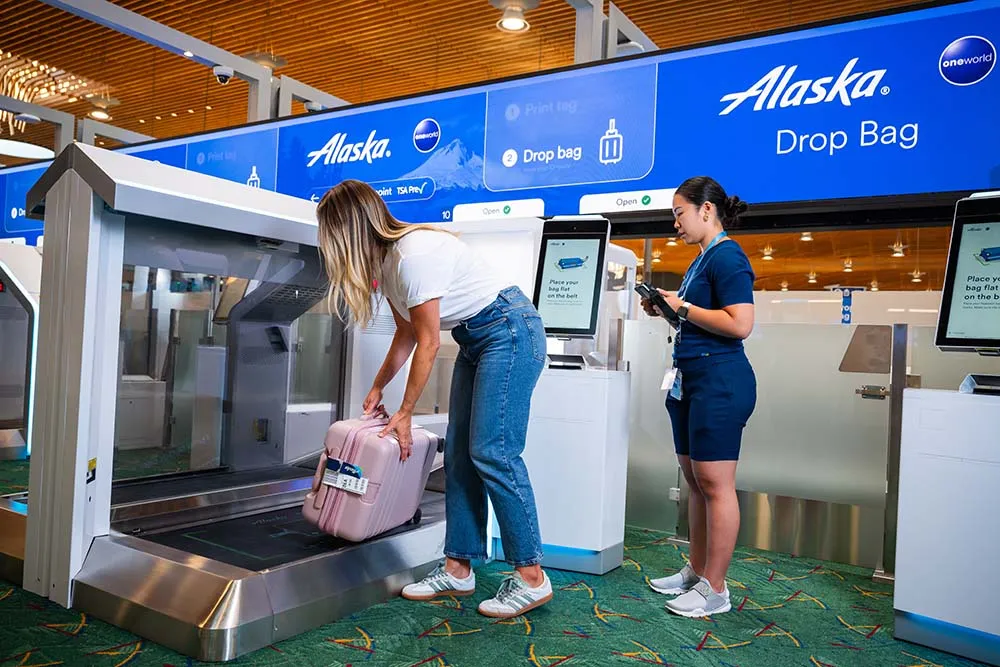Alaska Airlines Introduces Facial Recognition for Smoother Travel Experience
Alaska Airlines is taking another step toward streamlining the airport experience with the introduction of optional facial ID verification at automated bag drop kiosks in Seattle and Portland. This technology aims to eliminate one of the most time-consuming aspects of air travel: the pre-flight check-in process. Previously, travelers using automated bag drops still needed to pause for an agent to manually verify their identification before proceeding. The new system removes this bottleneck, allowing passengers to complete the entire bag drop process independently in just a few moments. After travelers scan their bag tag at the kiosk, they can now simply scan their ID and have their face matched to their ID photo in real-time. Once the system confirms a match, their luggage is accepted and sent on its way to the aircraft, allowing passengers to proceed directly to security.
The airline has emphasized that this facial recognition technology remains entirely optional, recognizing that not all travelers may be comfortable with biometric verification. For those who prefer the traditional approach, human agents will continue to be stationed at the bag drop areas to provide assistance and manual ID checks. Alaska Airlines has also addressed potential privacy concerns by implementing robust data protection measures. The company assures passengers that all photos captured during the verification process are deleted immediately after use, with no long-term storage of biometric data. This commitment to privacy protection reflects the airline’s understanding that while many travelers embrace technological conveniences, they also value control over their personal information.
“Our goal is to get our guests to security in five minutes or less,” explained Charu Jain, Alaska Airlines’ senior vice president of merchandising and innovation. This facial recognition initiative represents just one component of Alaska’s broader strategy to modernize the airport experience. The technology builds upon the airline’s earlier implementation of automated bag drops, which were first introduced in Seattle, San Francisco, and Portland last year. The company is expanding these efforts at Seattle-Tacoma International Airport (Sea-Tac), where it’s installing ten new automated bag drops and eight additional bag tag stations. These additions form part of a comprehensive lobby renovation project scheduled for completion by 2026, which will transform the traditional airport check-in area into a more efficient, technology-driven space.
Over the past several years, Alaska Airlines has steadily moved away from conventional check-in processes. The carrier has been phasing out traditional kiosks in favor of a mobile-first approach that allows passengers to complete most pre-flight tasks from their smartphones. This shift reflects changing consumer preferences and technological capabilities, with most travelers now carrying devices that can handle everything from boarding passes to seat selection. By embracing these digital transformations, Alaska Airlines aims to create a more seamless travel journey that begins well before passengers arrive at the airport. The facial recognition system represents the next logical evolution in this progression, addressing one of the few remaining points where physical verification had still been required.
The implementation of biometric technology by Alaska Airlines comes amid a broader industry trend toward automated identification systems at U.S. airports. Later this month, CLEAR—a trusted traveler program that uses biometric data to verify identities—will launch biometric eGates at Sea-Tac, Hartsfield-Jackson International Airport in Atlanta, and Reagan National Airport in Washington, D.C. These systems will further automate identity checks at security checkpoints, potentially reducing wait times and enhancing the efficiency of the screening process. The simultaneous adoption of biometric verification by both airlines and security services suggests a coordinated effort to transform the airport experience through technology.
As air travel continues to recover from the disruptions of recent years, these technological innovations reflect the industry’s focus on improving efficiency while addressing passenger concerns about crowds and close contact in busy terminals. By enabling travelers to complete more steps independently, Alaska Airlines is not only reducing wait times but also providing passengers with greater control over their journey. The optional nature of the facial recognition system respects individual preferences while offering those who opt in a faster, more streamlined experience. As this technology becomes more widespread across airports nationwide, it may fundamentally change how Americans experience air travel, potentially transforming what has often been considered a stressful process into something more manageable and efficient for millions of passengers each year.


